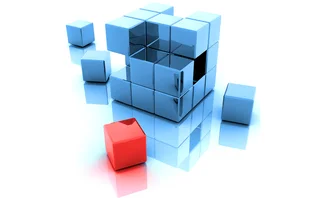
Swiss Re expects cat bond deluge
Swiss Re, one of the world's top three reinsurance companies, plans to issue 50% to 100% more insurance-linked securities over the next year, in line with an expected rise in total industry issuance, said Swiss Re chief economist for North America, Kurt Karl, during a press briefing in New York.
With poor performance in the fixed income market in the last year, investors have been keen to load up on new catastrophe risk issues, which offer excellent diversification, as they are uncorrelated with the other financial risks in investors’ portfolios. The higher demand has lowered the cost to issuers, making insurance-linked securities a more affordable means of risk transfer.
According to Swiss Re, several factors will drive activity in the alternative risk transfer market in the coming year, of which insurance-linked securities are just a small part.
Martin Albers, a member of Swiss Re's executive board and head of risk solutions, cited low premium income due to the soft insurance market of recent years, estimated record industry losses of $70 billion in 2001, and the impact of dismal equity markets on insurers' investment portfolios as the drivers of significant increases in pricing and reduction in risk appetite among insurers. In this hardened market, not only are corporations paying more, but they are being offered less protection as insurers lower policy limits and by raise deductibles.
Reinsurers like Swiss Re are seeking to write more business in the current high premium environment, but in order to assume higher returning risk they must transfer away the lower performing risk written in the soft insurance markets of past years. One tool for this is insurance-linked securities.
Figures presented by Swiss Re suggest that despite significant investment in new and existing insurance companies after September 11, insurance capacity as a whole is still lower than it was prior to the terrorist attacks. Gary Ransom, a managing director at Swiss Re subsidiary, Fox-Pitt, Kelton, added that the new capital was conditioned to seek only high return business, and would therefore not significantly drive pricing down. This should also maintain demand for alternative risk transfer, he said.
The bulk of the alternative risk transfer market, which Swiss Re says has grown from 26% of total commercial lines to 37% this year, is comprised of self-insurance, captives and finite reinsurance facilities.
Only users who have a paid subscription or are part of a corporate subscription are able to print or copy content.
To access these options, along with all other subscription benefits, please contact info@risk.net or view our subscription options here: http://subscriptions.risk.net/subscribe
You are currently unable to print this content. Please contact info@risk.net to find out more.
You are currently unable to copy this content. Please contact info@risk.net to find out more.
Copyright Infopro Digital Limited. All rights reserved.
As outlined in our terms and conditions, https://www.infopro-digital.com/terms-and-conditions/subscriptions/ (point 2.4), printing is limited to a single copy.
If you would like to purchase additional rights please email info@risk.net
Copyright Infopro Digital Limited. All rights reserved.
You may share this content using our article tools. As outlined in our terms and conditions, https://www.infopro-digital.com/terms-and-conditions/subscriptions/ (clause 2.4), an Authorised User may only make one copy of the materials for their own personal use. You must also comply with the restrictions in clause 2.5.
If you would like to purchase additional rights please email info@risk.net
More on Structured products
A guide to home equity investments: the untapped real estate asset class
This report covers the investment opportunity in untapped home equity and the growth of HEIs, and outlines why the current macroeconomic environment presents a unique inflection point for credit-oriented investors to invest in HEIs
Podcast: Claudio Albanese on how bad models survive
Darwin’s theory of natural selection could help quants detect flawed models and strategies
Range accruals under spotlight as Taiwan prepares for FRTB
Taiwanese banks review viability of products offering options on long-dated rates
Structured products gain favour among Chinese enterprises
The Chinese government’s flagship national strategy for the advancement of regional connectivity – the Belt and Road Initiative – continues to encourage the outward expansion of Chinese state-owned enterprises (SOEs). Here, Guotai Junan International…
Structured notes – Transforming risk into opportunities
Global markets have experienced a period of extreme volatility in response to acute concerns over the economic impact of the Covid‑19 pandemic. Numerix explores what this means for traders, issuers, risk managers and investors as the structured products…
Structured products – Transforming risk into opportunities
The structured product market is one of the most dynamic and complex of all, offering a multitude of benefits to investors. But increased regulation, intense competition and heightened volatility have become the new normal in financial markets, creating…
Increased adoption and innovation are driving the structured products market
To help better understand the challenges and opportunities a range of firms face when operating in this business, the current trends and future of structured products, and how the digital evolution is impacting the market, Numerix’s Ilja Faerman, senior…
Structured products – The ART of risk transfer
Exploring the risk thrown up by autocallables has created a new family of structured products, offering diversification to investors while allowing their manufacturers room to extend their portfolios, writes Manvir Nijhar, co-head of equities and equity…







